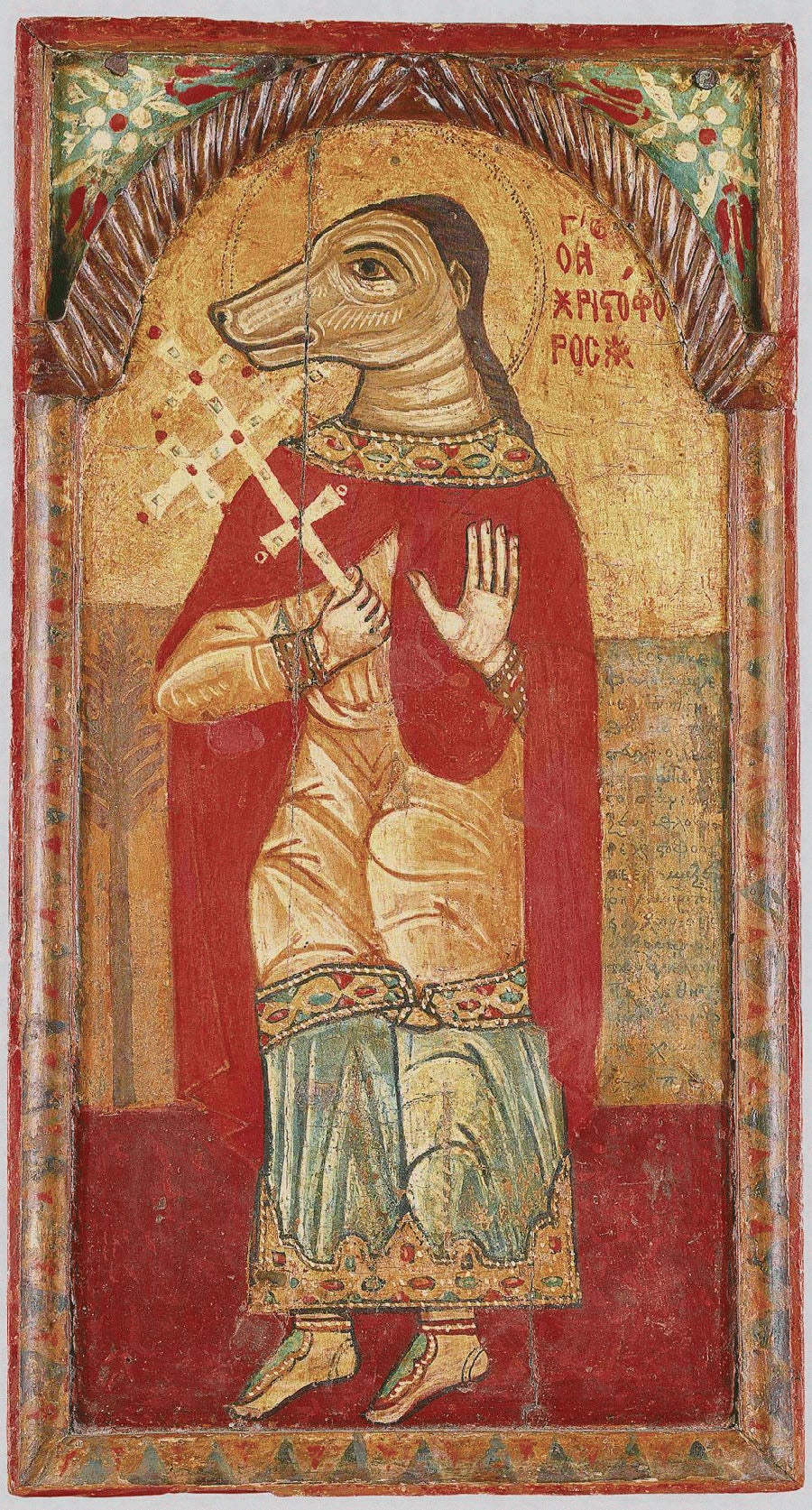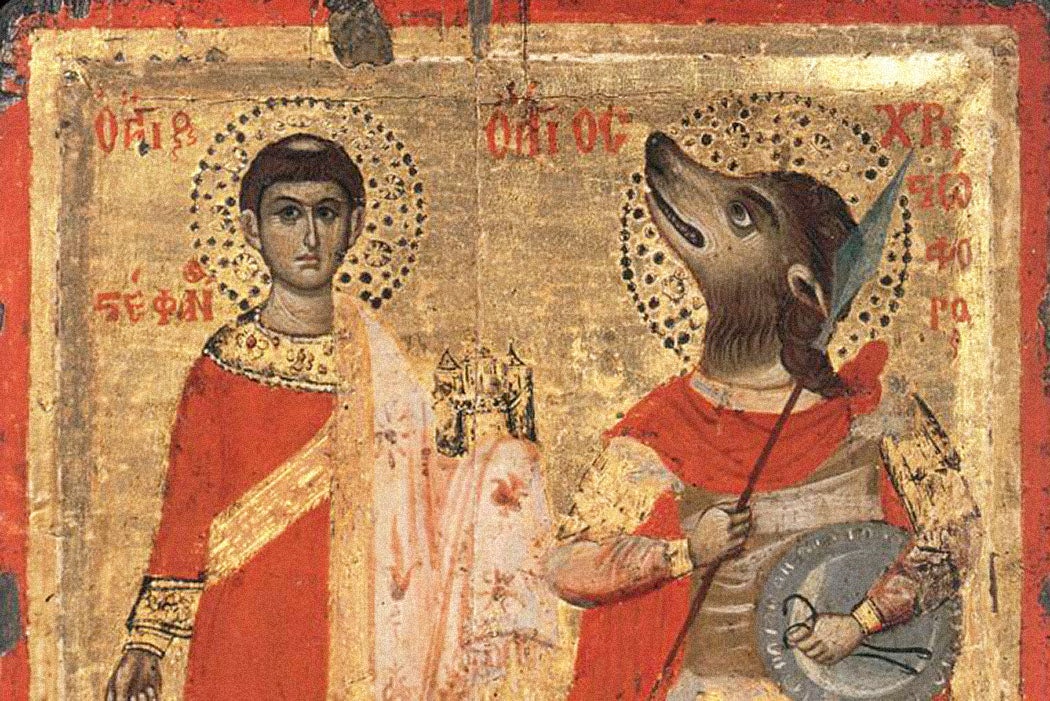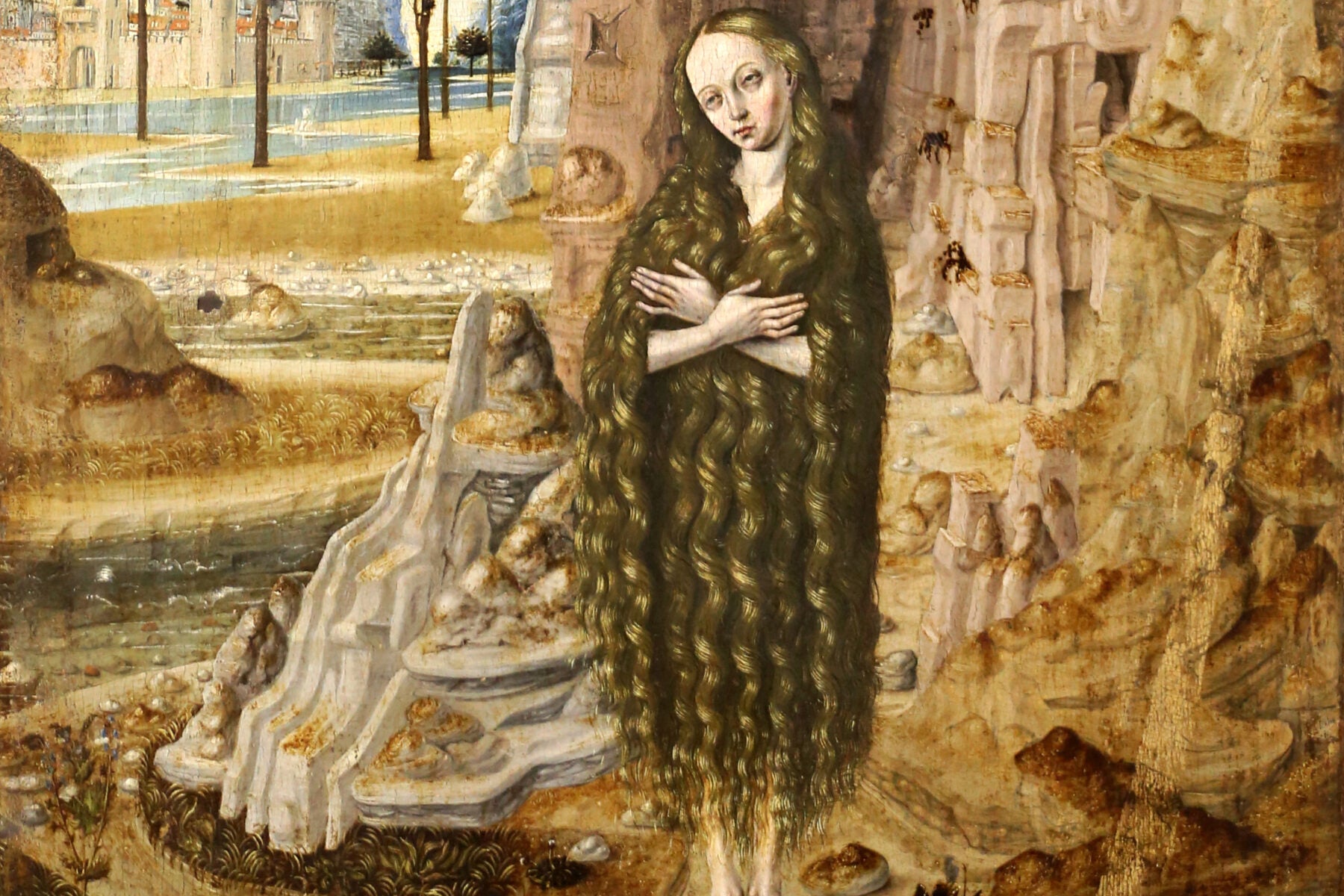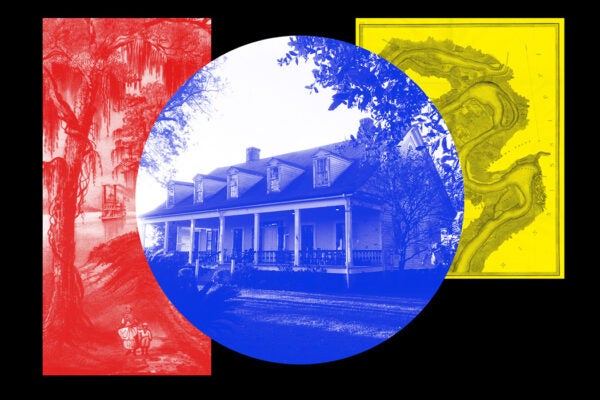In the ninth century, the French monk Ratramnus of Corbie wrote a letter to the monk Rimbert in Saxony, addressing a series of urgent questions: Is there really a race of dog-headed people living in the far regions of the Earth? More importantly, if so, do they have human souls, and is it the duty of Christians to attempt to convert them?
As historian Chet van Duzer explains, writers from Pliny to Marco Polo filled out the far edges of their maps with societies of dog-headed folk. According to architectural and art historian, Elizabeth den Hartog, the dog-headed joined the ranks of legendary peoples like the Astomi, mouthless people who lived on smells alone; the Blemmyes, whose faces were set into their chests; and the one-legged Sciopods, who used their giant feet as parasols; and so on.
Passed down from antiquity, these fantastical peoples didn’t fit neatly into Christian doctrine. Were they descendants of Adam, created in the image of God? Augustine of Hippo—future saint—considered the issue, asking,
What shall I say of the Cynocephali, whose dog-like head and barking proclaim them beasts rather than men? But we are not bound to believe all we hear of these monstrosities. But whoever is anywhere born a man, that is, a rational, mortal animal, no matter what unusual appearance he presents in color, movement, sound, nor how peculiar he is in some power, part, or quality of his nature, no Christian can doubt that he springs from that one protoplast.
This appears to have been a consensus opinion. Many depictions of the Pentecost—the moment, in Christian lore, when the Word descended on all nations—throw a couple of dog-headed figures into the mix, and medieval depictions of Jesus preaching occasionally gave him an audience of cynocephali.

For Ratramnus, there was one important piece of evidence: the story of St. Christopher. Still a familiar figure today, Christopher was depicted for centuries as dog-headed or a monstrous giant—or both. Consider the seventeenth-century icon that showed him with, in addition to luxurious robes, human hands, and flowing locks, an unmistakable snout. In fact, although Catholic art now pictures St. Christopher as a typical (if somewhat large) bearded man, the image of a dog-headed warrior saint persists in Eastern Christianity.
More to Explore
Wild Saints and Holy Fools
In the old story, the saint was originally named Reprobus (a.k.a. “reprobate”; it’s not exactly subtle.) Despite his monstrous appearance, he carried some unconscious inkling of Christ in his heart. He prayed, writes literary scholar Jennie Friedrich, and a white-robed intermediary came to him and breathed into his mouth, granting him the power of speech. With his conversion, he changed his name to Christopher. From there, he performed a series of miracles and converted hundreds in the process.
Weekly Newsletter
The role of the cynocephali tells us something about how medieval European thinkers conceptualized otherness and difference. As the literary historian Emily Rebekah Huber points out, “dog” was a common slur against non-Christians. In the cultural imaginary of the Middle Ages,
the doghead was a monstrous figure: he could not speak, had a voracious and cannibalistic appetite, and provoked a frightening crisis of kind in his taxonomic liminality between beast and human being. He was often a stand-in for the figure of Muslim, Jew, or heretic—equally monstrous categories to medieval writers of romance. The taboo of miscegenation makes up the body of the pagan cynocephalus, wherein religious difference is figured as racial difference, and, remarkably, as species difference (or crisis).
Christian thinkers sometimes solved the quandary of the wondrous peoples by claiming them as descendants of Cain or Ham, writes den Hartog. Horrifically enough, this same concept came to be used as a slur against people of African descent and was developed into a justification for slavery. Even the barking, dog-headed Reprobus was granted more recognition of common humanity.
Support JSTOR Daily! Join our membership program on Patreon today.








